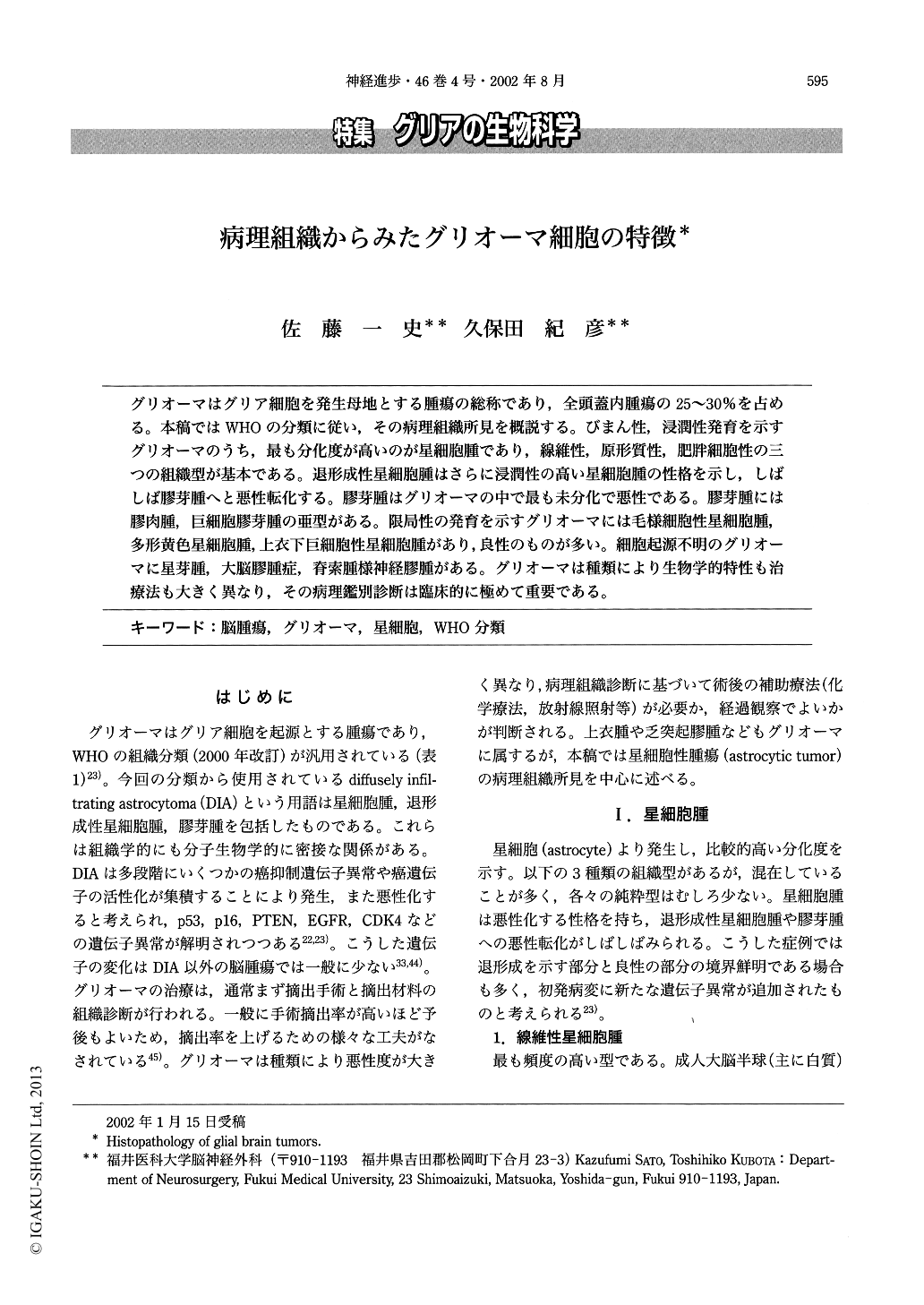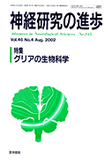Japanese
English
- 有料閲覧
- Abstract 文献概要
- 1ページ目 Look Inside
グリオーマはグリア細胞を発生母地とする腫瘍の総称であり,全頭蓋内腫瘍の25~30%を占める。本稿ではWHOの分類に従い,その病理組織所見を概説する。びまん性,浸潤性発育を示すグリオーマのうち,最も分化度が高いのが星細胞腫であり,線維性,原形質性,肥絆細胞性の三つの組織型が基本である。退形成性星細胞腫はさらに浸潤性の高い星細胞腫の性格を示し,しばしば膠芽腫へと悪性転化する。膠芽腫はグリオーマの中で最も未分化で悪性である。膠芽腫には膠肉腫,巨細胞膠芽腫の亜型がある。限局性の発育を示すグリオーマには毛様細胞性星細胞腫,多形黄色星細胞腫,上衣下巨細胞性星細胞腫があり,良性のものが多い。細胞起源不明のグリオーマに星芽腫,大脳膠腫症,脊索腫様神経膠腫がある。グリオーマは種類により生物学的特性も治療法も大きく異なり,その病理鑑別診断は臨床的に極めて重要である。
“Glioma” is a generic term for the tumors of glial cell origin. Glioma represents 25-30% of primary brain tumors. In this article, we reviewed the histopathological findings of astrocytic neoplasms according to the recently revised WHO classification of tumors of the nervous system.
The term “diffusely infiltrating astrocytomas” applies to a group of astrocytic tumors that is divided into three histopathologic entities as follows : diffuse astrocytoma (WHO grade II ), anaplastic astrocytoma (WHO grade III ), and glioblastoma (WHO gradelV).

Copyright © 2002, Igaku-Shoin Ltd. All rights reserved.


